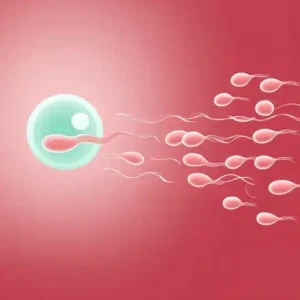For couples trying to conceive, fertility is often shrouded in mystery and misinformation. With so many myths circulating about getting pregnant, it can be difficult to separate facts from fiction. To help set the record straight, we’re busting the top 6 fertility myths for both men and women.
#1 Myth: A Woman’s Age Doesn’t Affect Her Fertility
One of the most common fertility myths is that a woman’s age has little impact on her ability to get pregnant. However, a woman’s age is actually the single most important factor when it comes to fertility.
Here’s why: Women are born with all the eggs they will ever have – about 1 to 2 million. By puberty, that number drops to around 300,000-400,000 eggs. With each menstrual cycle, about 1,000 eggs are lost. By age 30, a woman’s supply of eggs has declined to between 75,000-150,000.
Not only does the number of eggs decline with age, but so does the quality. As women age, their eggs are more likely to have chromosomal abnormalities, which increases the risk of miscarriage and birth defects.
After age 35, fertility declines more rapidly. After 40, the chance of getting pregnant in any given cycle is less than 5%. By 45, fertility has declined so much that getting pregnant naturally is very unlikely.
The bottom line is that a woman’s age is the most important factor when it comes to fertility, despite notions that female age doesn’t matter. Women in their 20s and early 30s have the best chance of conceiving.
#2 Myth: Being Fit and Healthy Can Offset the Effects of Age
Many women believe that if they are very fit, active, and eat a healthy diet, they can counteract the effects of age on fertility. Unfortunately, this is not the case.
Lifestyle factors like diet, exercise, and not smoking do impact fertility to some degree. But they cannot override the age-related decline in the number and quality of a woman’s eggs.
Even Olympic athletes see their fertility decline with age. The most physically fit 40-year-old woman will still have far fewer high quality eggs than a physically fit woman in her 20s.
In the end, age remains the most important factor. While being generally healthy may provide a small fertility boost, it cannot prevent the natural age-related fertility decline.
#3 Myth: You Can Get Pregnant at Any Point in Your Cycle
Many assume that on any given day in their cycle, they have a chance of getting pregnant from sex. In reality, there is only a short window each month when pregnancy is possible.
This fertile window coincides with ovulation, which is when a mature egg is released from the ovary. An egg can be fertilized for about 12-24 hours after ovulation. Sperm can survive 3-5 days inside the female reproductive tract.
So the fertile window spans about six days – the 5 days before ovulation, and the day of ovulation. Having sex outside this window still gives you about a 10-15% chance of pregnancy. But the highest conception chances, around 20-30%, occur by having sex in the 3 days before and on ovulation day.
Ovulation day itself is not guaranteed to result in pregnancy – contrary to popular belief. The best approach is to have sex every 2-3 days during the entire fertile window.
Tracking ovulation with ovulation predictor kits, basal body temperature, or cycle tracking apps can help identify your most fertile days for conception.
#4 Myth: Fertility Issues Are Usually a Female Problem
Another common myth is that if a couple struggles to conceive, it’s probably due to a fertility problem in the female partner. In reality, male and female factor infertility are nearly equal:
– Female factor: 35%
– Male factor: 35%
– Combination of both: 20%
– Unexplained: 10%
Male infertility is just as likely as female infertility. Common causes in men include low sperm count, poor sperm motility, and abnormal sperm shape. Environmental toxins, medications, infections, varicocele, and genetic conditions can also impact male fertility.
That’s why it’s important for both partners to undergo basic fertility testing if conception difficulties arise. Male partners should get a semen analysis, and female partners should track ovulation and get hormone level testing if irregular cycles occur.
With male factor just as prevalent as female factor infertility, it’s simply untrue that fertility troubles are usually a female issue. Evaluating both partners provides the full picture.
#5 Myth: Men Remain Fertile into Old Age
Society often paints the picture of men having no biological clock for fathering children, suggesting they can continue having kids well into old age. In reality, male fertility also declines with age.
While men generally remain fertile longer than women, at around age 35 they still begin experiencing:
– Decreased semen volume
– Declining sperm motility
– Increased DNA damage in sperm
– Higher risk of genetic defects
By age 50, about 30% of men experience a significant decline in fertility. Male age also increases time to conception – men over 35 take longer on average to impregnate their partner.
The decline accelerates after 50. By 60, most men are considered subfertile, and conception chances dwindle without fertility treatment. The maximum age cut-off for sperm donors is usually 40 due to the steady decrease in male fertility.
Contrary to myth, male biology does impact fertility, though not as abruptly as female fertility. Men who want biological children should be aware of age-related fertility declines.
#6 Myth: Men Should Limit Ejaculations to “Save Up” Sperm
Some believe that men should abstain from sex and limit ejaculations to “store up” high quality sperm. However, current research does not support this notion.
Infrequent ejaculation can actually have the opposite effect. It allows sperm to stagnate and degenerate in quality. Older sperm can result in lower fertility.
Regular ejaculation helps discard suboptimal sperm and make way for newly formed, healthier sperm. It’s best for men to ejaculate every 2 to 3 days for optimal sperm production.
During the woman’s fertile window, daily sex is ideal to maximise chances of conception. But outside the fertile window, ejaculating every few days is sufficient. Storing up sperm by avoiding ejaculation completely can be counterproductive.
The Bottom Line
Getting pregnant is rarely as easy as it seems. For couples trying to conceive, separating myth from fact is the first step on the journey.
Knowing the realities around the female biological clock, the limits of lifestyle fixes, ovulation timing, male fertility issues, and optimal ejaculation frequency helps create realistic expectations.
While fertility has some grey areas, arming yourself with truths over myths empowers you to take proactive steps for starting a family. Overcoming hurdles is easier when you see them coming and understand where they originate.
Photo by Anthony Cunningham for Zoom Baby
This post first appeared in 2018. It was last updated in June 2023.
Zoom Baby is a leading supplier of Pregnancy Tests and Ovulation Test Kits





